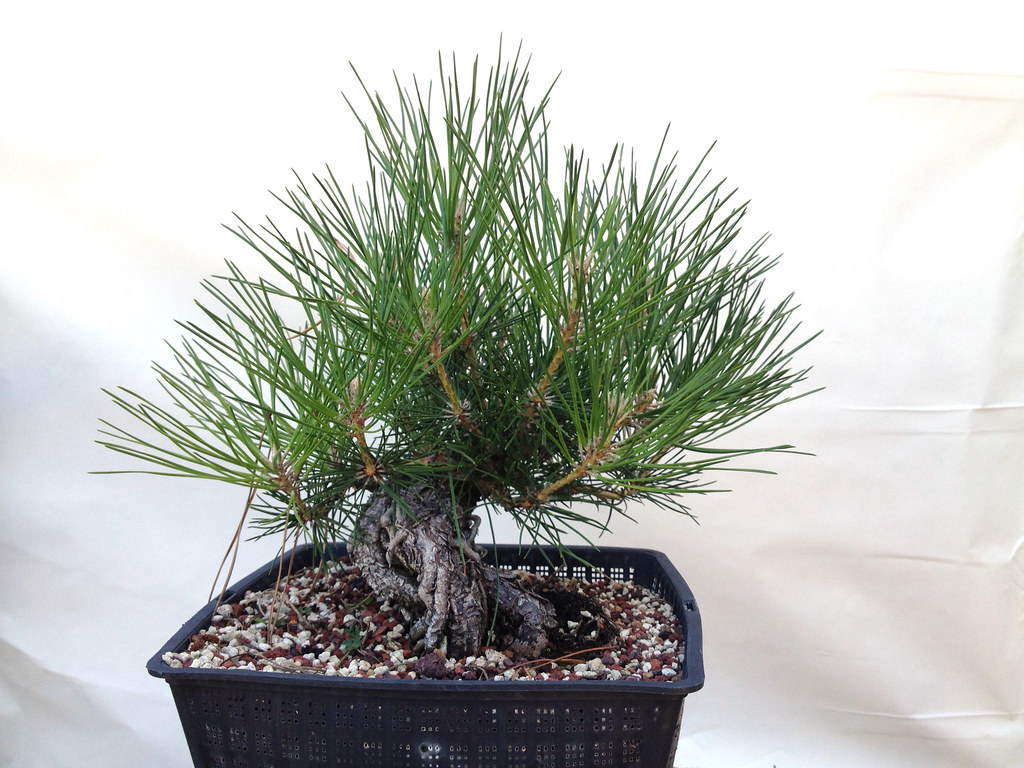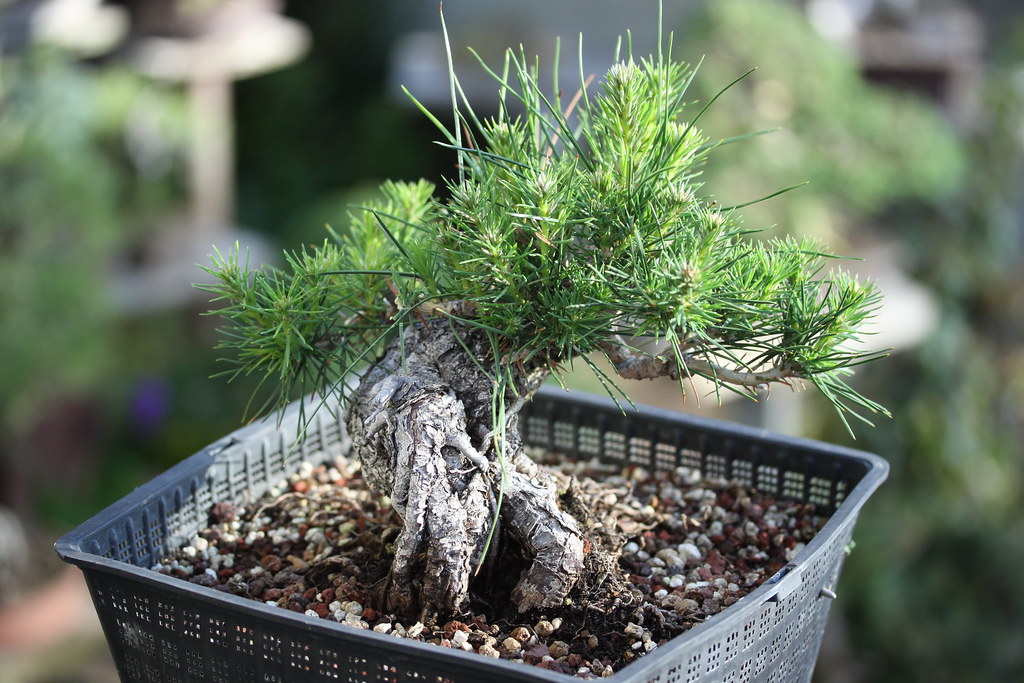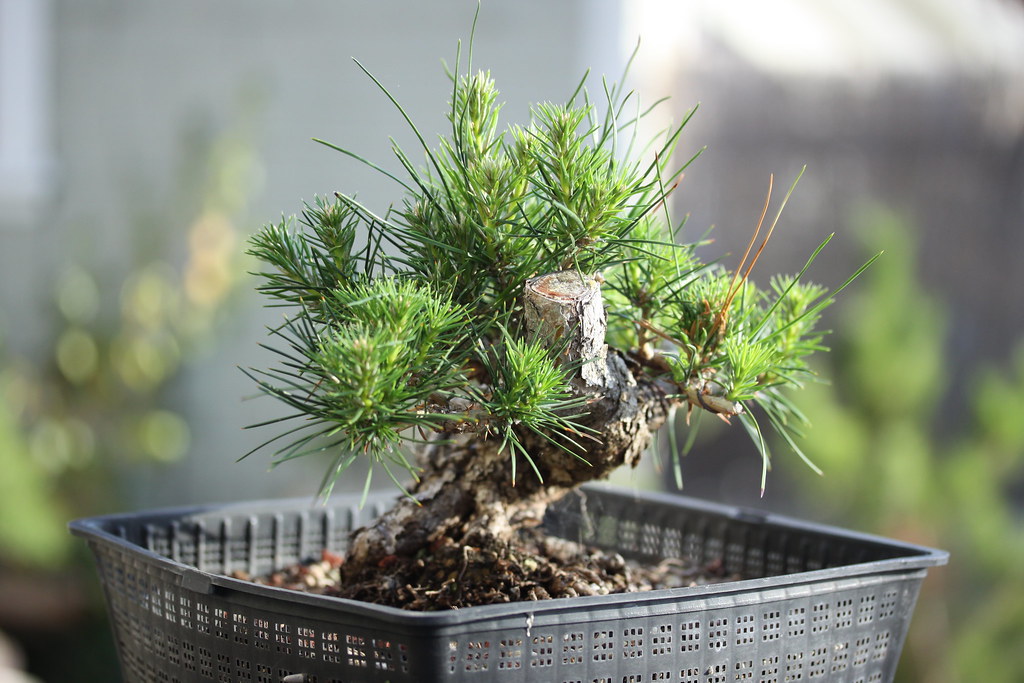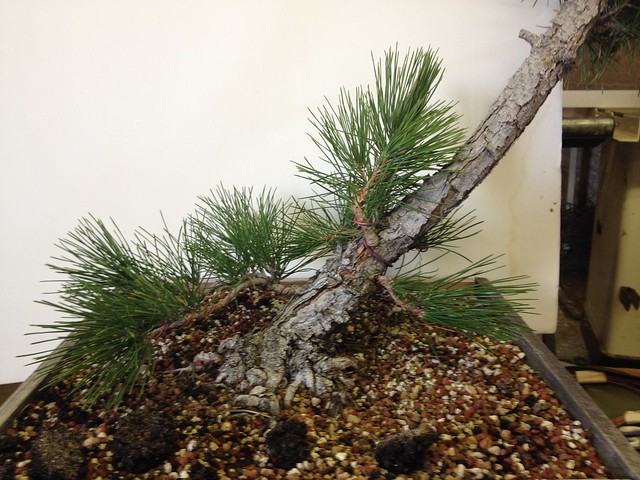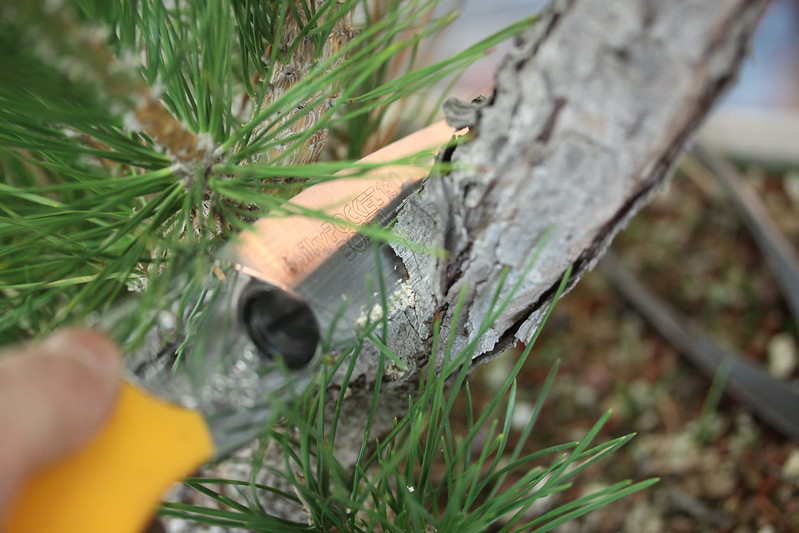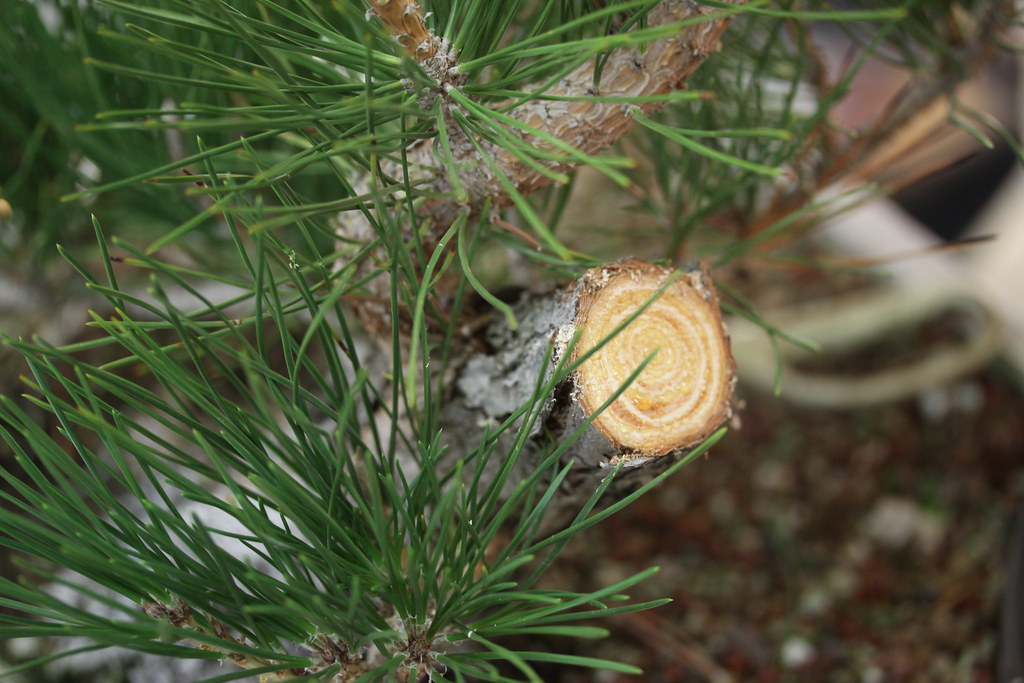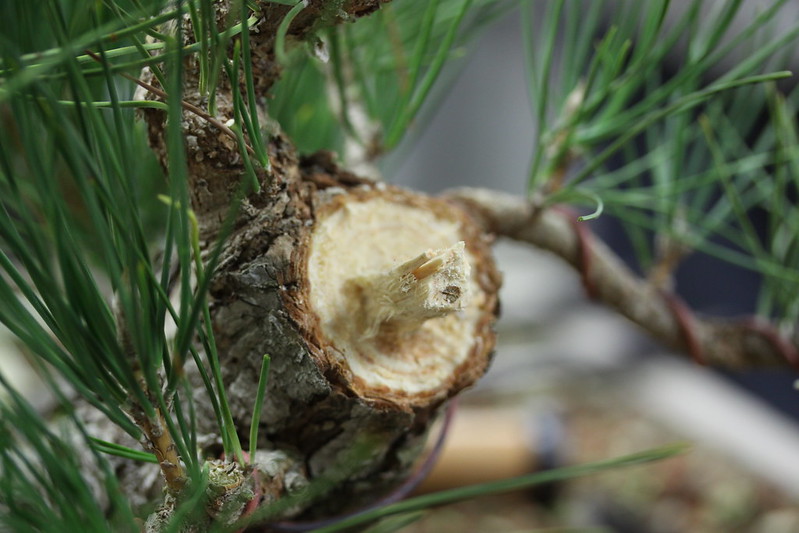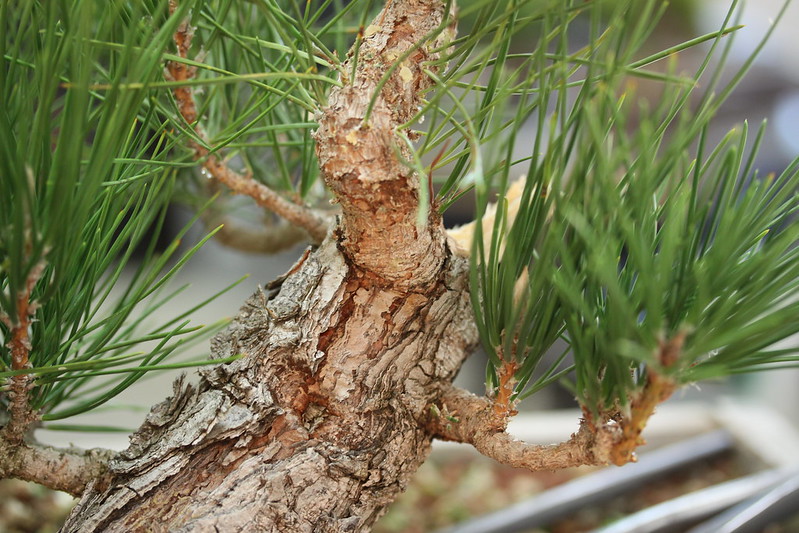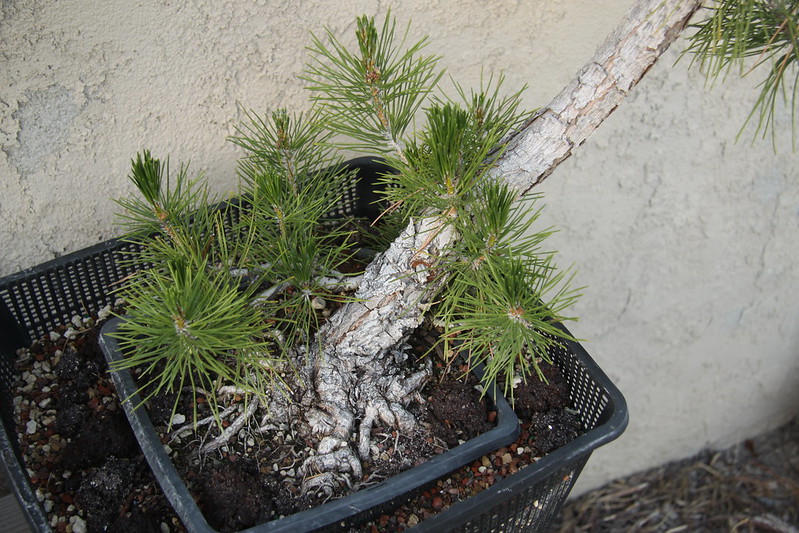Last we left this slant style tree:
And a look at it from roughly the same angle today:
Removing the primary sacrifice branch, to leave the new one that is coming from the next trunk section that I wired last fall:
Carving the stump back:
Finished jin with dished area surrounding. This allows the wound to heal mostly flat, rather than bulging out (I sealed it with cut paste after taking the photo):
The transition from the larger to the smaller trunk sections taken the front of the tree. It still needs some time to look like a smooth transition. If you look carefully at the photo below you can see tiny buds coming out from in between the needle pairs at the bend of the smaller trunk section; these will be some of the most important branches on the tree. I bent the new sacrifice branches over to encourage them to grow a bit more. At the bottom of the photo, in the large trunk section you can see a small circular depression, this is the very tip of a small jin that was sticking out quite a bit when I first made it a few years ago.
Here is a photo from May 2012 showing the jin sticking out from the trunk:


